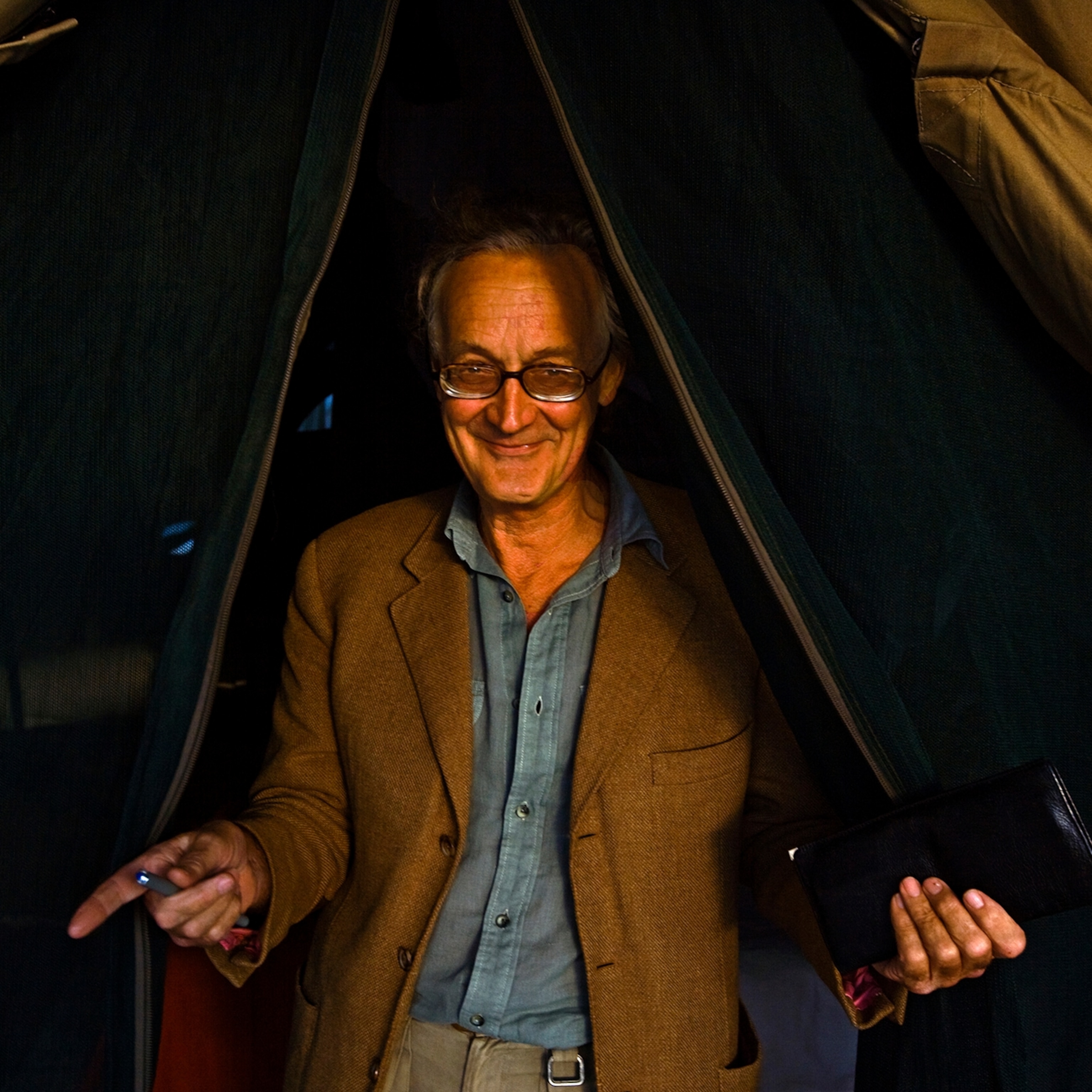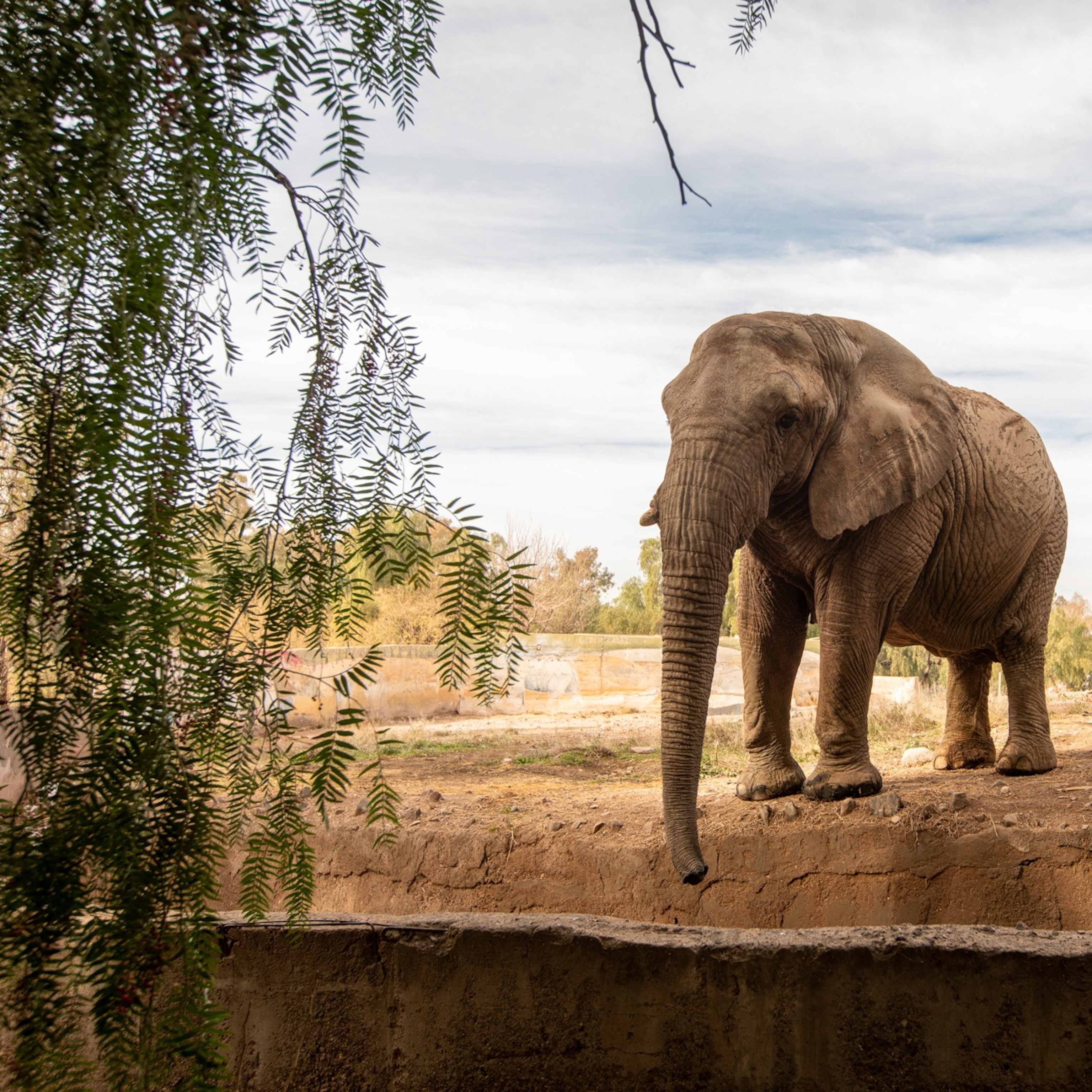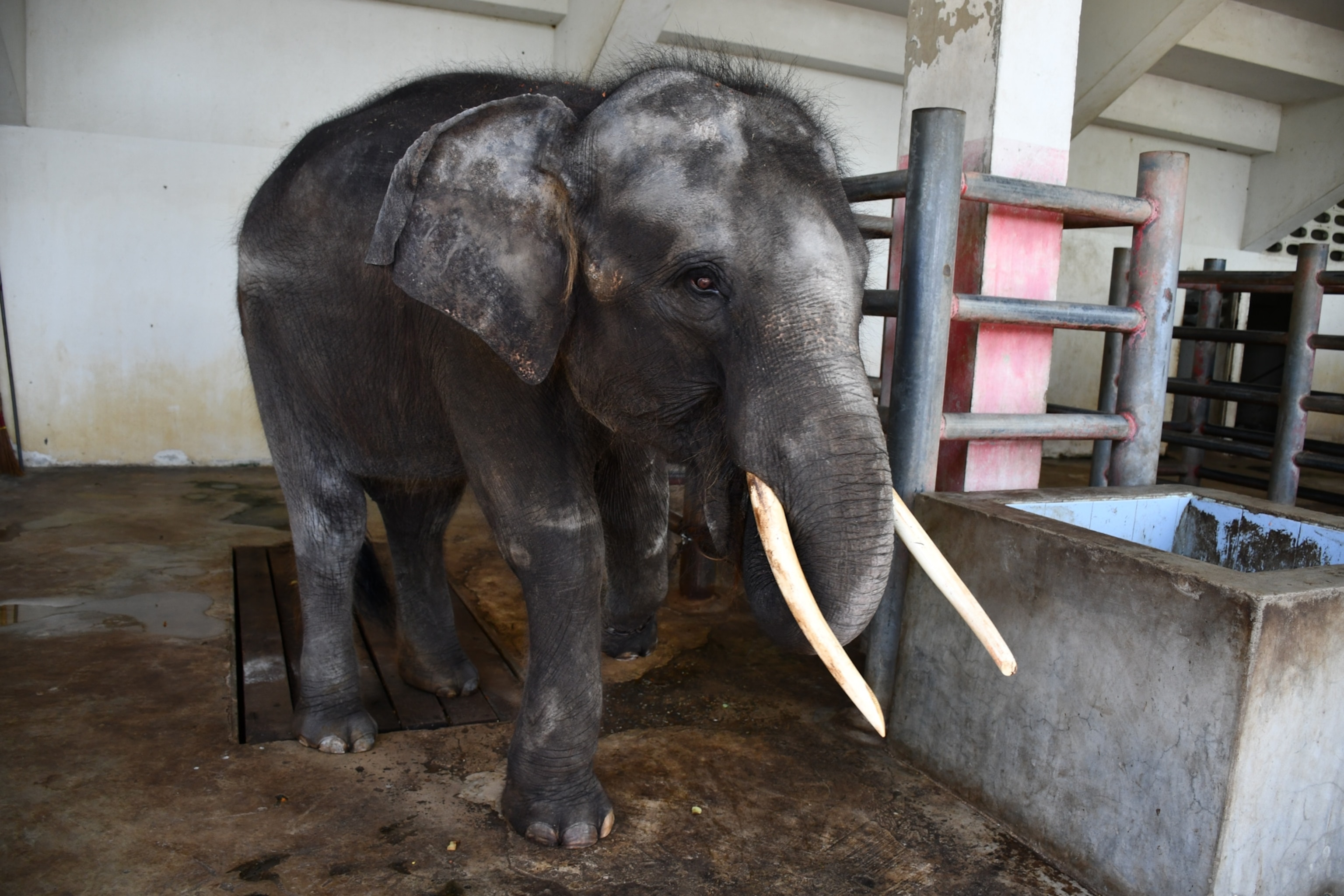
This elephant’s plight sparked outrage. Here’s an update.
National Geographic’s account of Gluay Hom, an injured young elephant in Thailand, triggered calls for rescue. Here’s how he’s doing now.
Last June, behind a stadium in the outskirts of Bangkok, Thailand, I stood in front of a young elephant that was chained to a pole. His leg was swollen and bent unnaturally. He had a bloody sore at his temple from lying on the hard ground. His eyes wouldn’t focus.
Gluay Hom, the four-year-old elephant at Samut Prakarn Crocodile Farm and Zoo, was too unwell to perform tricks in the facility’s daily elephant shows. At that point, photographer Kirsten Luce and I had been in Thailand for a month, reporting a story on the captive wildlife tourism industry. We’d seen hundreds of tethered elephants in camps and paddocks around the country.
Gluay Hom was in the worst shape we’d seen. We put him in our story.
After our story published online in May, we received an outpouring of emails, messages, and social media posts asking for an update on Gluay Hom, now five years old. Many wondered why he hadn’t been rescued yet. Others talked about crowdfunding money to buy him from his owner. People wanted to know if he’s still suffering.
The short answer is that Gluay Hom is doing somewhat better, according to animal welfare experts who have visited him. His leg has improved and he no longer has open sores on his body. He is still chained in the same place under the stadium. He is still very skinny. He cannot be rescued unless the facility surrenders or sells him, or authorities seize him.
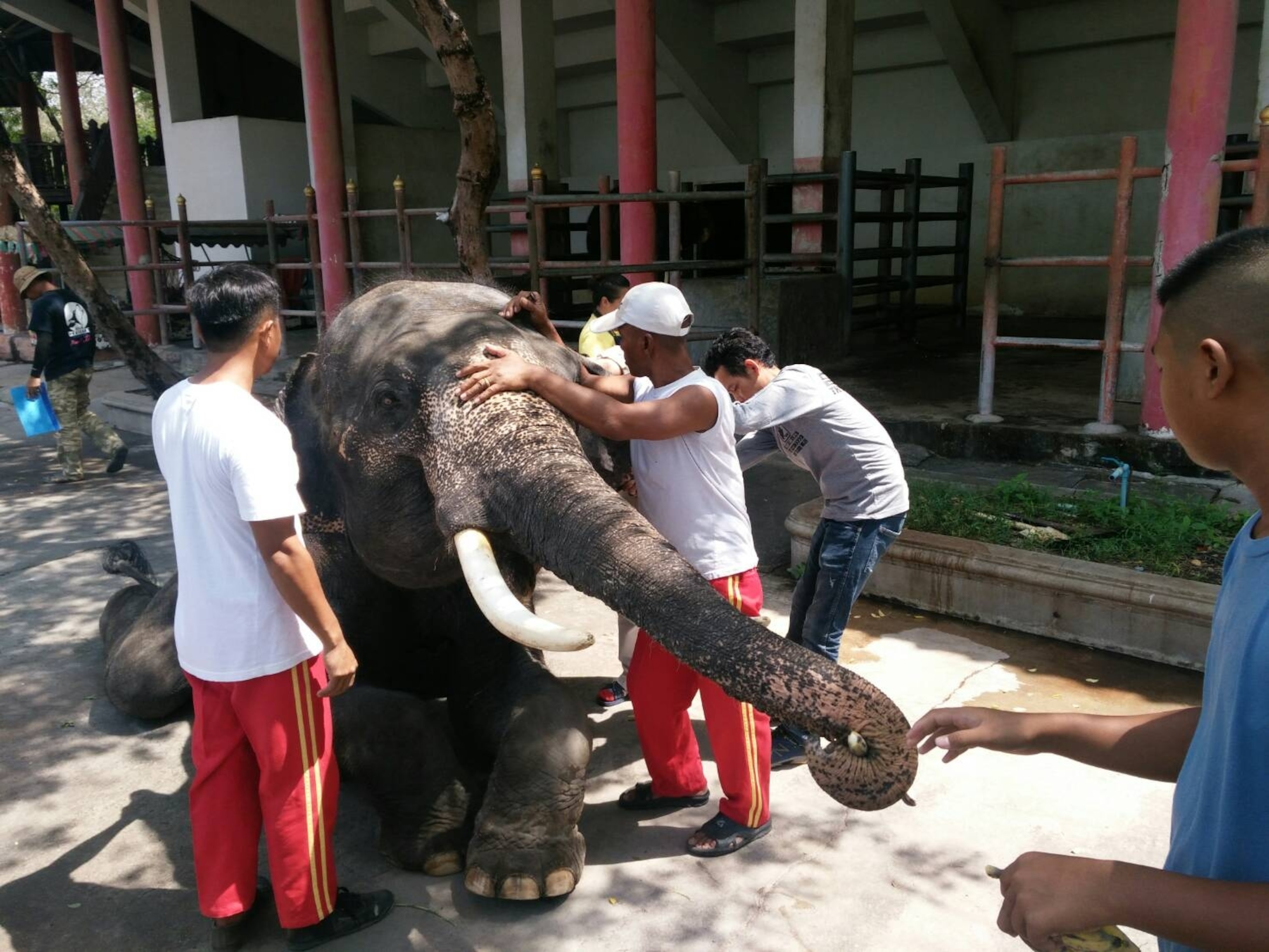
The zoo’s owner, Uthen Youngprapakorn, did not respond to requests for comment on Gluay Hom’s current condition. (It is unclear whether Gluay Hom is owned by Youngprapakorn personally, or by the zoo as an entity.) However, when we were visiting last year, he said the fact that his animals hadn’t died showed that the facility was caring for them properly.
Government check-ups
Beginning last June, authorities from Thailand’s Department of Livestock, whose jurisdiction includes captive elephants, conducted a series of inspections of Samut Prakarn. They asked Edwin Wiek, founder of Wildlife Friends Foundation Thailand, a Bangkok-based nonprofit animal rescue and rehabilitation organization, to accompany them. Wiek and his team previously had been to check on Gluay Hom and the other animals at Samut Prakarn after we alerted them to the situation in June 2018. Wiek says his team found the animals in “deplorable” conditions.
Last June, veterinarians drew Gluay Hom’s blood, and tests revealed he had parasites in his bloodstream, Wiek says, for which the elephant was treated. In December, authorities from the Department of Livestock and the Department of National Parks, Wildlife and Plant Conservation, which is responsible for zoo oversight, ordered the facility to stop using two other emaciated elephants for performances and to change their diet to help them gain weight. (Gluay Hom had not been performing at the time.)
The Bangkok Post reported that officials “found no problems with the physical aspects of the zoo, but recommended the management added activities and tools to improve the [lives] of the animals in its cages.”
That’s the extent to which authorities have intervened, Wiek says. The Department of Livestock and Department of National Parks did not respond to requests for comment, but government officials, according to Wiek, have not formally alleged any animal welfare violations at Samut Prakarn.
Wiek’s team most recently returned to check on Gluay Hom and the other animals on June 2. All elephants but Gluay Hom have resumed performing. Wiek says that conditions overall have not changed. Last week, the Phuket News highlighted new footage that shows injuries visible on some of the elephants.
Nonetheless, Gluay Hom’s rescue is an unrealistic prospect. Thailand’s Draught Animal Act of 1939 treats domestic elephants as property, like other working animals such as horses and donkeys. Thailand’s approximately 3,800 captive elephants can be legally owned by private individuals and businesses, and used in any way they please.
The act, the central statute for how Thai law treats captive elephants, does not protect their welfare, Wiek says.
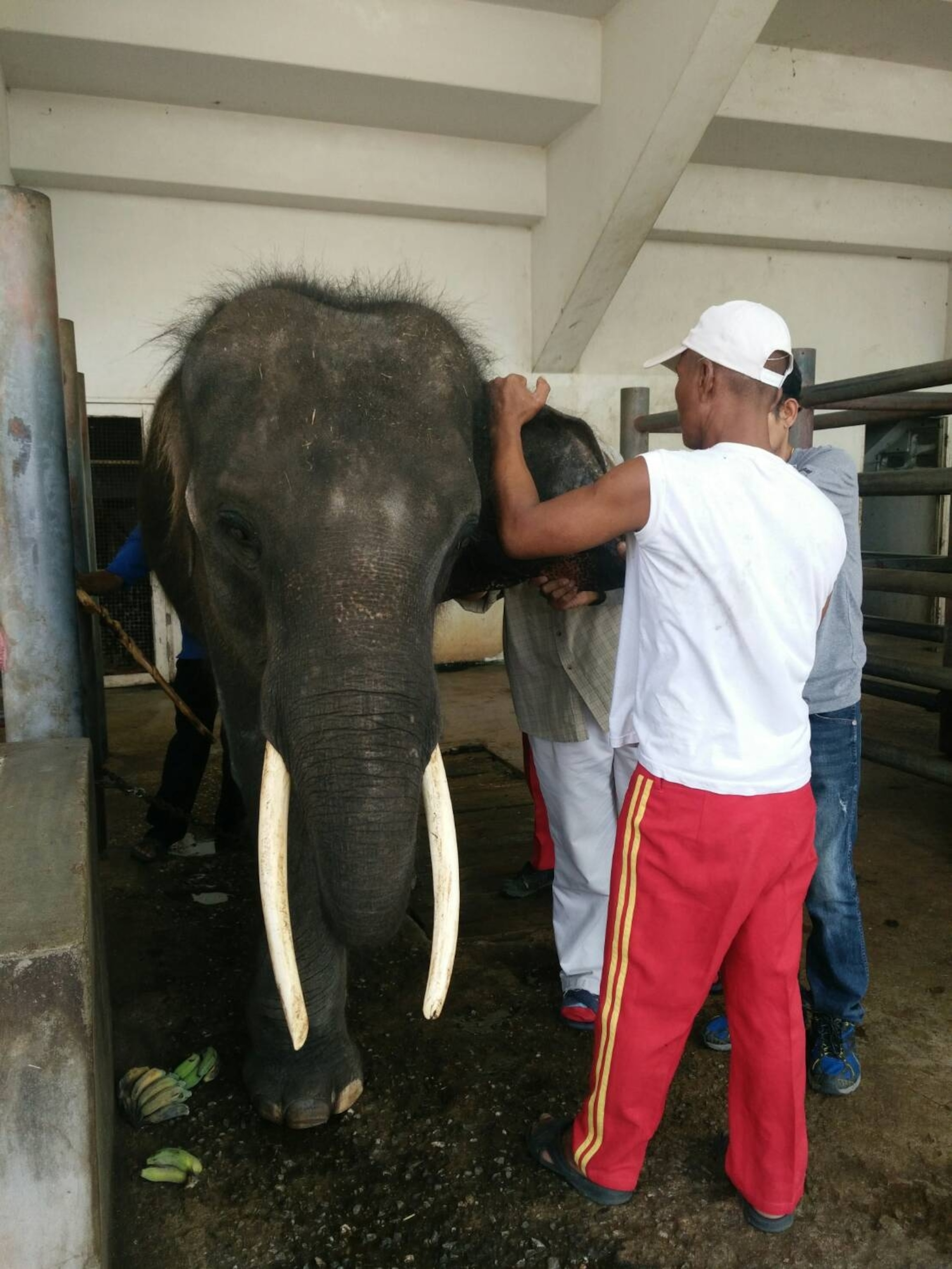
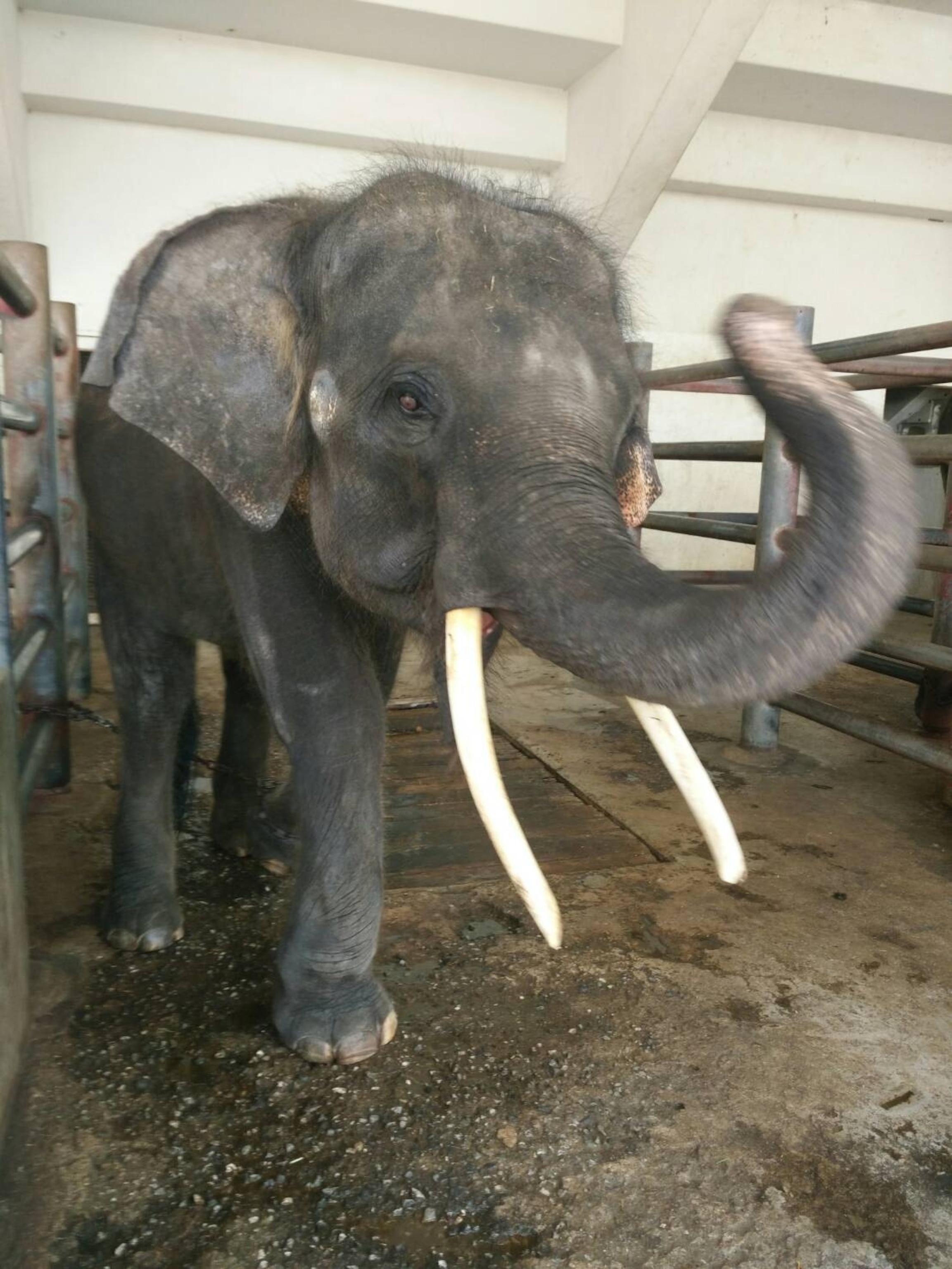
“We don't have the law on our side to actually help these elephants,” says Wiek, who also is an honorary adviser to the parliamentary committee on natural resources and environment. “Gluay Hom is a very good example of an animal in horrible conditions that should be confiscated.” Thailand’s Cruelty Prevention and Welfare Animal Act applies to all animals, but Wiek says that it’s applied inconsistently with captive elephants.
Big business
Elephants are a cornerstone of Thailand’s tourism industry. Many of the country’s 3,800 captive elephants work in camps performing for and interacting with tourists. The Tourism Authority of Thailand promotes elephant riding and bathing prominently on its website.
As of six days ago, on June 13, Samut Prakarn Crocodile Farm and Zoo was a featured attraction on the website of the Tourism Authority of Thailand (TAT), a government agency that promotes tourism. After National Geographic emailed the TAT for comment that day, the page was deleted. The agency did not respond to a request for comment on their recommendation of Samut Prakarn or on the page’s deletion.

The elephant breeding industry in Thailand also is highly lucrative: A young, captive-bred elephant can sell for at least $22,000, according to the government-run Thai Elephant Conservation Center (TECC), which breeds and trains elephants. Wiek says they typically go for at least $50,000. The illegal import of wild-caught elephants for the tourism industry was rampant as recently as 2012, according to a report by TRAFFIC, a wildlife-trade monitoring organization. In other parts of the country, such as Ban Ta Klang, also known as Elephant Village, the government subsidizes elephant tourism, offering a monthly stipend to trainers after they can demonstrate an elephant has mastered three tricks and is actively performing in local shows.
Inadequate intervention
Gluay Hom’s situation is not unique for captive elephants in Thailand. An emaciated young elephant at the Phuket Zoo received significant attention in Thai and international media in April after animal activists published video footage of his skeletal body. The elephant, officially named Ping Pong but also known variously as Jumbo or Dumbo or Dodo among the press and public, was the subject of a petition signed by more than 200,000 people, asking that he be sent to a sanctuary.
In a sequence of events similar to what followed National Geographic’s reporting on Gluay Hom, authorities from the Phuket Provincial Department of Livestock visited the facility in April in response to the public outcry. Officials found the elephant to be sick and told Phuket Zoo that he could not perform until his health improved. An official told local newspaper The Phuket News that despite his weight, he was getting adequate food, water, and shelter.
On April 20, the elephant died. His body had become so weak that both of his back legs broke as he struggled to pull himself out of some mud, the zoo manager told local media. It was four days before he was taken to the hospital where he died. He was three years old.
Dim prospects
Gluay Hom’s future as a male elephant in the tourism industry is uncertain. Males are worth tens of thousands of dollars less than females, Wiek says, because they can be difficult to control and expensive to keep. Starting in adulthood (the age at onset varies widely, typically 20 to 40 years old), male elephants periodically undergo a hormonal cycle called musth, during which their testosterone skyrockets and they become highly aggressive toward humans.
The publicity from National Geographic’s reporting on Gluay Hom has put pressure on the government to confiscate him, Wiek says. He’s hoping it will also pressure Thailand to adopt a law mandating standards of care for zoos.
Wiek says he would like to bring Gluay Hom to his Wildlife Friends Foundation elephant refuge, but buying the elephant would enable the owner to go out and purchase a new one, thus perpetuating the cycle.
“The owner shouldn't be rewarded with money to sell his elephant… The elephant should be confiscated. But unfortunately, it doesn't work that way in Thailand,” Wiek says. “Not yet. Not yet.”

